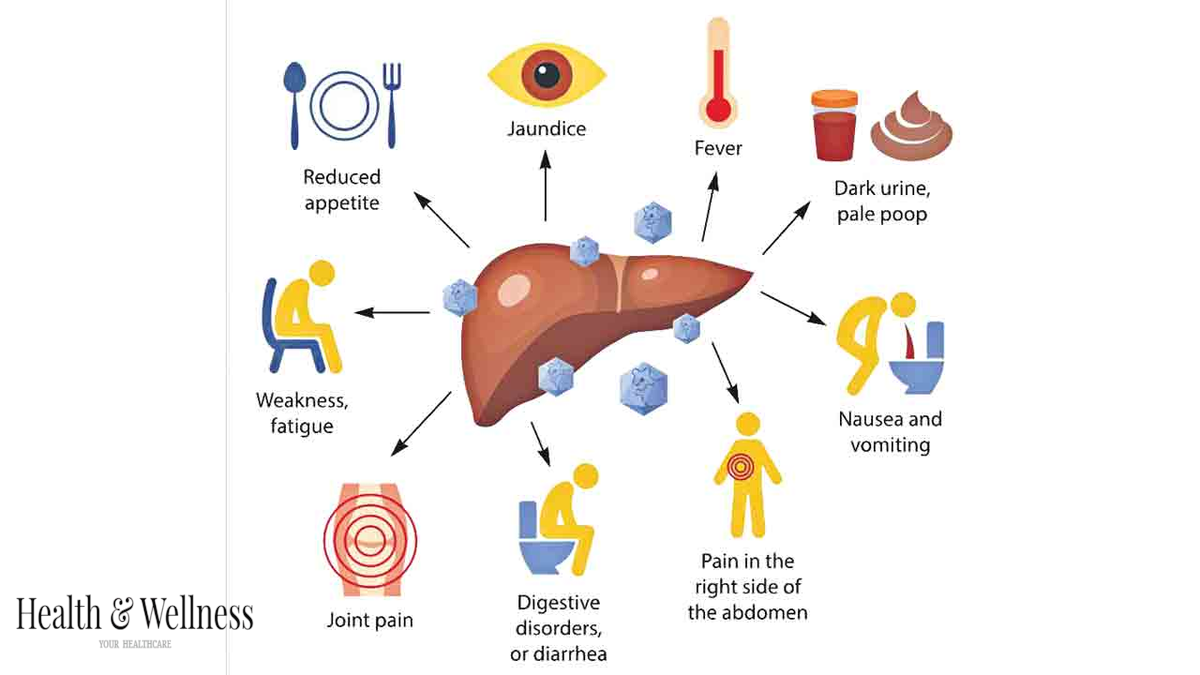Hazardous Air: America Breathes Toxic Smoke While California Burns

Aaron Glantz, Farida Jhabvala Romero, Caleigh Wells, and Alison Saldanha wrote and produced this article.
The hazard that Western wildfires pose to human health extends far beyond the people who are compelled to flee the fire’s path.
Large portions of the nation are being choked by smoke from these fires, which have burnt millions of acres in California alone, according to a study of federal satellite images conducted by Stanford University’s Environmental Change and Human Outcomes Lab and NPR’s California Newsroom.
A startling increase in the number of days people in California and the Pacific Northwest, as well as Denver and Salt Lake City in the Rocky Mountains and rural Kentucky and West Virginia in Appalachia, are breathing in smoke, according to a months-long analysis that was based on more than ten years’ worth of data gathered by the National Oceanic and Atmospheric Administration and examined down to the ZIP code level.
The survey of key U.S. cities revealed that San Jose, California, had the most dramatic increase in smoke days—more than 400%. Between 2016 and 2020, the average number of days that San Jose residents breathed in smoke was 45. The number of days per year with wildfire smoke in Los Angeles and San Diego grew by 230% to 32 days in Los Angeles and 23 days in San Diego. Predominant winds sent smoke plumes thousands of miles away from the Western United States and Canada, so even the East Coast was not safe. Our data revealed that the number of days inhabitants in Philadelphia and Washington, D.C. inhaled smoke from wildfires increased by over 40%, to an average of about 20 days each year.
Marshall Burke, an associate professor of earth system science at Stanford University who oversaw the experiment, stated that “literally no amount of exposure is safe.” Recent studies reveal that breathing in smoke from wildfires has detrimental effects on the brain in addition to the heart and lungs. Pregnancy concerns also arise from smoke exposure. The most vulnerable groups are children and the elderly. “There’s no magic bullet point below which we’re safe and above which we’re not.” The takeaway is that too much is harmful. And it becomes worse the more you acquire.
According to experts, the extent of the smoke inundation necessitates taking immediate action to reduce the risk of wildfires and lessen the effects of climate change. However, NPR’s California Newsroom’s investigations have revealed that insufficient efforts have been made by the federal and state governments to manage forests, including the use of programmed burns. To address the state’s wildfire crisis, both have worked on considerably fewer acres than they had promised to do mitigation work on.
In California, where residents in some fire-prone areas are exposed to smoke for an average of three months out of the year, the smoke deluge was especially severe. In 2018, during a record fire year, there were 30,000 more admissions for respiratory and cardiac illnesses than in the two years prior, according to an analysis of state hospitalisation records conducted by NPR’s California Newsroom.
An study of data from the Centres for Medicare & Medicaid Services shows that the number of federally paid prescriptions for the asthma treatment albuterol also increased in the state, with 240,000 more claims for the drug in California in 2018 compared to 2013. $34 million is the annual cost to taxpayers of the additional albuterol.
Having to live near smoke
The persistently bad air quality, according to the residents of the most smoke-filled neighbourhoods, has negatively impacted their health and quality of life.
In Orland, a tiny community of 7,800 people in Northern California known for producing queen honey bees, Tim Pedrozo, 61, a third-generation dairy farmer, said, “We’re exhausted from having to go through so many years of smoke.”
Pedrozo’s lungs are giving him concern. When there is smoke in the air, his headaches become dull. “Wanting to stay here is just becoming more and more difficult,” he remarked.
According to our data, between 2016 and 2020, Orland inhabitants inhaled smoke on average 82 days per year. For over four months last year, smoke pervaded the air as more acres burned than at any other time in California’s recent history.
In addition to his health, Pedrozo said that his company has suffered. The glasses-wearing, gray-bearded farmer reported tasting a smokey aftertaste in his conventional aged cheese. He sells his cheese rounds at outdoor farmers markets, but the lingering smoke deters customers.
According to our data, between 2016 and 2020, Orland inhabitants inhaled smoke on average 82 days per year. For over four months last year, smoke pervaded the air as more acres burned than at any other time in California’s recent history.
In addition to his health, Pedrozo said that his company has suffered. The glasses-wearing, gray-bearded farmer reported tasting a smokey aftertaste in his conventional aged cheese. He sells his cheese rounds at outdoor farmers markets, but the lingering smoke deters customers.
The year-round grazing animals on Pedrozo’s 20-acre farm, the cows, have also fallen ill. He claimed that they experienced a pink eye illness outbreak the previous year, which Pedrozo blames on a mix of dust and smoke. An eye was lost by one cow. Studies have connected animals exposed to smoke from wildfires to irreversible blindness as well as pink eye.
He declared, “I don’t want to stay here and get worse.” He therefore intends to sell the farm he has owned for 22 years and go to Missouri with his wife, as their son has already done.
However, the analysis conducted by Stanford University and NPR’s California Newsroom revealed that it will be difficult to escape the smoke, even if concerned Californians like Pedrozo leave the state.
One of the most significant effects of climate change in the Western United States may be caused by smoke from wildfires. Additionally, it’s not just happening in the Western United States, as we can observe more and more,” Burke added.
Burke’s lab examined the existence of smoke plumes overhead in every community from Hawaii to Florida using cutting edge computer modelling. Then, between 2016 and 2020—when hotter, drier weather driven by climate change sparked record fire years—reporters from the California Newsroom compared the average annual number of days with smoke in the air between 2009 and 2013, when extremely destructive wildfires were less common.
The strength of the fire and the surrounding weather determine how far smoke can travel into the atmosphere. However, NPR’s California Newsroom and Burke’s lab at Stanford University examined satellite pictures that demonstrate how wildfire smoke plumes from the West and central Canada spread higher and farther across the continent as winds carry them. NASA claims that these smoke plumes frequently go unobserved, giving the impression of cleaner air while swamping areas of the Midwest and East Coast, including Missouri, Pedrozo’s intended relocation.
According to our data, since 2009, the frequency of days with smoke above the Midwest has slightly decreased. The smoke is thicker now, according to Burke’s modelling of the satellite imagery, which implies that “wildfires are also worsening overall air quality in the Midwest, just as they are in the West.”
“This story is no longer exclusive to the West Coast. This is a national story,” he declared.
The children are not doing well.
According to our investigation, Willows, California, a little hamlet located about 80 miles north of Sacramento, is the smokiest spot in the West. More than 1 million acres, or more than 1,500 square miles, burned in the Mendocino National Forest to the west of it last year during the August Complex Fire, which at the time was the largest in modern California history. The Butte County town of Paradise, which is 45 minutes east, was completely burned by the Camp Fire two years prior, killing 85 people.
When we arrived on the Friday in September, the surrounding mountains were shrouded in a dense haze, but the sky had cleared and the quality of the air had improved from earlier in the week. Between mouthfuls of cotton candy and steak sandwiches, hundreds of students and parents caught up with one another while the local high school cheerleaders shook their gold and purple pompoms for a junior varsity football game.
Greg Kitchen, athletic director at Willows High School, was very relieved by the day’s comparatively pure air.
For once, I feel like I can breathe easily. Standing on the sidelines, watching the game, Kitchen remarked, “It’s nice.” “It feels like we’ve had to continuously monitor air quality for the past five years or so.”
Because of the distinctly bad air quality, Kitchen and other school administrators in the area have already cancelled outdoor sports practices and recess this school year in order to safeguard the health of the pupils.
As a physician’s assistant at Glenn Medical Centre, a tiny hospital in Willows, Brett Brown, 27, said, “Every time I go, there’s always someone who says something like, ‘Well, because of the smoke’ insert problem here.” It could be something like, “My diabetes is a little bit worse because I haven’t been exercising. Alternatively, “My allergies are so bad that I haven’t been able to breathe as well.”
Brown, who has asthma of his own, said he had personal experience with the aggravating effects of smoke. He claimed that episodes of asthma last year prolonged a bronchitis he had.
The dim truth of global warming
This new reality is a direct result of climate change, as variables such as rising temperatures and less precipitation cause fires to burn hotter, faster, and more frequently than in the past. Since 2017, eight of the ten biggest fires in California history have started.
The most active wildfire season in the state’s recent history occurred last year. 33 individuals lost their lives, over 4 million acres burned, and around 10,500 buildings were damaged or completely destroyed. It might be considerably more devastating this year. The majority of California is experiencing a “exceptional drought” or “extreme drought,” which indicates an excess of parched vegetation that is ready to catch fire.
However, experts claim that both individuals and government authorities may take action to better address the rising risk.
The fuel for the latest large fires in California’s woods comes from a perilous accumulation of undergrowth brought on by decades of negligent forest management. According to fire scientists, in order to lessen the likelihood of catastrophic wildfires, both the state and federal governments need to greatly increase their efforts.
The state and federal governments “have a reactive policy—we’re going to respond to the fires,” according to Pomona College’s director of environmental analysis, Char Miller. “Oh my goodness, that’s a problem because it implies you’re never going to be in the lead.”
In August of last year, California Governor Gavin Newsom stated that the U.S. Forest Service and he will work together to avoid wildfires on 500,000 acres annually by 2025. But the Forest Service is still far from achieving that objective today. The organisation informed us that, as of the conclusion of the fiscal year on September 30, they had treated roughly 120,000 acres in California. Even after several emails, Cal Fire, the state agency, was unable to provide specifics about its progress.
In California, prescribed burns represent an additional avenue for progress. According to scholarly studies, prescribed burns are far more common in most of the Southeast United States, where our examination reveals a significant drop in wildfire smoke over the previous ten years.
The environment depends on fire naturally; without it, wildlands would be covered in little trees and vegetation. This results in the natural, low-intensity fires that act as an ecological reset being replaced by destructive conflagrations. A $20 million insurance liability fund and changes to liability regulations have been established by the California legislature in recent weeks, with the support of numerous state lawmakers.
UCSF professor and pulmonologist John Balmes, who sits on the California Air Resources Board, stated, “We have to get people to understand that in order to prevent catastrophic fires, they may have to get exposed to a little smoke from prescribed burns.”
According to our investigation, Willows, California, a little hamlet located about 80 miles north of Sacramento, is the smokiest spot in the West. More than 1 million acres, or more than 1,500 square miles, burned in the Mendocino National Forest to the west of it last year during the August Complex Fire, which at the time was the largest in modern California history. The Butte County town of Paradise, which is 45 minutes east, was completely burned by the Camp Fire two years prior, killing 85 people.
The biggest utility in the state, Pacific Gas and Electric, is still under investigation for its part in starting wildfires. The corporation was put under “enhanced oversight” by the California Public Utilities Commission earlier this year for neglecting to give priority to cleaning vegetation from near its most dangerous power lines. In relation to the 2018 Camp Fire, the corporation, which a federal court referred to as “a terror — T-E-R-R-O-R to the people of California,” entered a guilty plea to 84 counts of involuntary homicide last year. The company informed the CPUC in July that the Dixie Fire of this year, which has burnt over 960,000 acres, or 1,500 square miles, to date, might have been sparked by a fallen branch.
In order to lessen the negative effects of wildfire smoke on their health, people can also install interior air filtering devices. “These kinds of efforts can make a difference in protecting homes and saving lives, as good data demonstrate,” Balmes added. However, these gadgets can be pricey. Balmes suggests that more be done by the government to offer free or inexpensive air filters. “Yet all of this calls for investment.”
reversing the increase of air pollution
Burke stated that decades of hard-won improvements in air quality brought about by environmental regulations such as the Clean Air Act are being reversed by the significant increase in wildfire smoke. “We have been successful in improving the quality of our air for quite some time,” he continued, but the swift increase in smoke is “threatening to undo decades of improvement and undoing them very quickly.”
PM2.5, which are minuscule particles of airborne ash thirty times smaller than a human hair strand’s width, is one hazardous pollutant found in wildfire smoke. This particulate matter has the ability to enter the bloodstream and be deeply absorbed into the lungs. They provide “the greatest health risk,” according to the Environmental Protection Agency, even prompting






